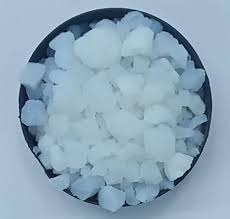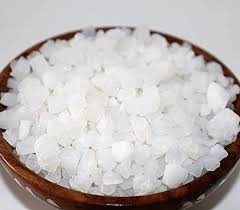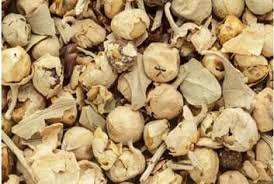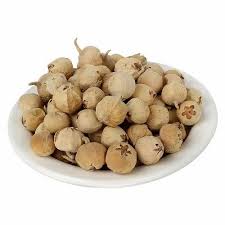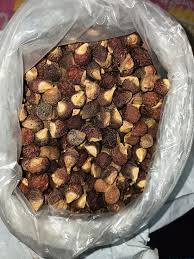Role of Banslochan in Panchakarma Therapy
Ayurveda, the ancient system of holistic healing, emphasizes cleansing and rejuvenation as core components of lasting health. Among its most respected therapies is Panchakarma—a five-step detoxification and healing process designed to remove toxins (ama), balance the doshas (Vata, Pitta, Kapha), and restore natural vitality. While the procedures themselves are widely studied, the supporting herbs and substances used during Panchakarma are equally vital, one of which is the lesser-known but highly potent Banslochan.
Also known as Tabasheer or Bamboo Silica, Banslochan is a crystalline substance derived from the nodes of bamboo plants (Bambusa arundinacea). It is prized in Ayurveda for its cooling, strengthening, and rejuvenating properties. But what many don’t realize is that Banslochan plays a significant role in enhancing the effectiveness of Panchakarma therapy.
In this comprehensive article, Dirghaanshi explores the Ayurvedic significance, therapeutic roles, and integration of Banslochan in Panchakarma procedures. Discover how this natural gem supports the body’s cleansing, healing, and post-detox restoration for true holistic wellness.
✅ Long Description 🌿
🌿 What is Banslochan?
Banslochan, also called Vanshlochan or Tvakshira, is a siliceous secretion found in the internodes of specific bamboo species. It is a white to translucent, brittle substance rich in organic silica, calcium, iron, and potassium.
In Ayurveda, Banslochan is recognized for its:
Rasa (Taste): Madhura (Sweet)
Guna (Quality): Laghu (Light), Snigdha (Unctuous)
Virya (Potency): Sheeta (Cooling)
Vipaka (Post-digestive effect): Madhura
These qualities make it ideal for use in Panchakarma protocols, especially to pacify aggravated Pitta and Vata, cool internal heat, support tissue repair, and build Ojas (immunity and life force).
🌬️🔥🌧️ Why Banslochan Is Ideal for Panchakarma Support
Panchakarma’s primary goal is to detoxify the body, balance the doshas, and rejuvenate the tissues. Banslochan aligns with each of these goals due to its:
✅ Sheeta (Cooling) nature – Balances heat accumulated during detox
✅ Silica-rich structure – Aids tissue regeneration post-detox
✅ Snigdha guna – Provides moisture to counteract dryness from cleansing
✅ Rasayana property – Rebuilds vitality and immunity after toxin removal
Banslochan supports both cleansing (Shodhana) and nourishment (Shamana/Rasayana) phases of Panchakarma.
🌀 Understanding Panchakarma: The Five Steps
Vamana (Therapeutic Emesis) – For Kapha disorders
Virechana (Purgation) – For Pitta detox
Basti (Medicated Enema) – For Vata balancing
Nasya (Nasal therapy) – For head and sinus cleansing
Raktamokshana (Bloodletting) – For blood purification
Each of these steps removes specific toxins and restores internal balance, but the body needs rejuvenative support during and after detox. That’s where Banslochan becomes essential.
🔍 How Banslochan Supports Each Panchakarma Stage
✅ 1. During Snehana (Oleation) & Swedana (Sudation)
These preparatory steps loosen toxins and prepare the body for detox.
Banslochan’s role:
Mixed with ghee or medicated oils to improve absorption
Supports tissue lubrication in Vata-predominant individuals
Protects skin and tissues from excessive heat generated during Swedana
✅ 2. Post Vamana & Virechana Recovery
After emesis or purgation, the body becomes light and dry. It needs nourishment and cooling.
Banslochan’s role:
Combats dehydration and electrolyte imbalance
Soothes the digestive tract and prevents inflammation
Replenishes minerals lost during cleansing
Aids in regaining mental calmness and physical strength
Usage Tip:
Mix 1/2 tsp Banslochan in warm milk with cardamom for a post-Virechana tonic.
✅ 3. Supporting Basti Therapy (Vata Detox)
Basti is crucial for balancing Vata dosha, especially in conditions like constipation, joint pain, or anxiety.
Banslochan’s role:
Used in oral supplements post-Basti to stabilize the nervous system
Provides snigdha (unctuous) support to reduce dryness in colon
Enhances the rebuilding of mucosal tissues
✅ 4. Enhancing Nasya Therapy
Nasya clears toxins from the head, sinuses, and nasal passages.
Banslochan’s role:
Ground into fine powder and mixed with herbs like mulethi or shankhpushpi for post-Nasya rejuvenation
Helps soothe irritation in the nasal and throat lining
Supports cognitive clarity and balances Pitta in the mind
✅ 5. Restoring Balance After Raktamokshana (Bloodletting)
Raktamokshana can cause temporary weakness or lightheadedness due to blood loss.
Banslochan’s role:
Acts as a rebuilding tonic for blood and tissues
Cools internal Pitta fire without heaviness
Promotes faster recovery and Ojas (vital energy)
🌿 Rasayana Role of Banslochan in Panchakarma
After the cleansing phase, Rasayana therapy (rejuvenation) is given to strengthen the tissues (dhatus), improve immunity, digestion, fertility, and mental clarity.
Banslochan is often:
Combined with ashwagandha, shatavari, and gokshura
Included in Chyawanprash to enhance energy and stamina
Added to herbal ghee preparations to nourish the brain and nervous system
Its ability to cool, rebuild, and lubricate makes it ideal for this phase of Panchakarma.
🧪 Scientific Backing of Banslochan
📌 Journal of Herbal Medicine (2022)
Banslochan’s silica content enhances collagen formation, critical after detoxification.
📌 International Journal of Ayurveda & Pharma Research (2021)
Showed Banslochan’s ability to reduce inflammatory cytokines, supporting internal balance after Panchakarma.
📌 Ayurveda Research Journal (2020)
Validated its use in Rasayana formulations post-cleansing for tissue repair.
🛠️ How to Use Banslochan During Panchakarma
Purpose Recommended Use
Post-Virechana recovery ½ tsp Banslochan + gulkand + warm water
Vata pacification With warm milk + ashwagandha at bedtime
Skin inflammation relief Mix with turmeric + rosewater for external application
Energy tonic post-detox Combine with Chyawanprash or shatavari powder
Lung cleansing (Kapha) With mulethi + Sitopaladi powder
🧘♀️ Who Should Use Banslochan in Panchakarma
✅ Vata-predominant individuals needing moisture and nervous system support
✅ Pitta individuals recovering from heat-related detox therapies
✅ Kapha types using Banslochan in small, carefully balanced doses
✅ Post-illness recovery or post-surgical care (under Ayurvedic guidance)
✅ Individuals undergoing intense Panchakarma therapies needing rejuvenation
⚠️ Precautions & Safety Tips
Always use pure, Ayurvedic-grade Banslochan (not synthetic silica)
Avoid high doses in Kapha-dominant people as it may cause heaviness
Pregnant or lactating women should consult an Ayurvedic practitioner
Store in airtight glass containers away from moisture
🛒 Where to Find Authentic Banslochan
Look for:
✅ Certified Ayurvedic suppliers
✅ Wild-harvested or traditionally collected sources
✅ Lab-tested for purity and contaminants
✅ Now available at Dirghaanshi’s online store, carefully curated for Panchakarma wellness
✅ Conclusion 🌿
Panchakarma therapy is one of the most transformative journeys in Ayurveda—but its success depends not just on the procedures, but on the supportive herbal allies used throughout the process. Banslochan stands out as a time-tested, gentle yet powerful compound that cools, rebuilds, and rejuvenates the body at every step.
Whether it’s calming post-Virechana inflammation, restoring Vata balance during Basti, or rebuilding strength and immunity after detox, Banslochan offers a holistic solution. It is a true Rasayana—supporting longevity, beauty, and vibrant health.
At Dirghaanshi, we are proud to bring you closer to this ancient wisdom, empowering you to heal naturally and sustainably.







